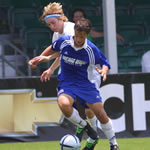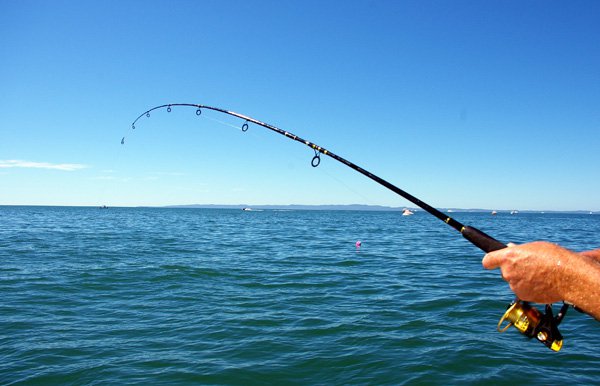double pracitces
Question
QUESTION: This year I will be swimming for my high school team. We are unable to have double practices because we get bussed to a pool. A couple times a week I will try to go from my school practice to my swim club and swim for another hour. I know this is not the best way to get in a double practice, so I was wondering if you know any dryland workouts that I could do. I have a very busy schedule, so I would need a quick workout that is still efficent.
ANSWER: Rachel,
You are in a very common position. The trouble with the sport of swimming is that you need a pool to practice. It's not always easy to have a pool readily accessible to you.
Dryland workouts tend to be more specialized to what you are training for. If you are more of a distance swimmer, you are going to want to concentrate on things that will improve your cardiovascular endurance and long twitch muscle fibers. Basically you want to repeat motions over and over again that will work your predominant swimming muscles.
If you are more of a sprinter, you might want to work on exercises that will help with you with your explosiveness and speed. This might be from jumping to sprint running.
Again, dryland is meant to augment your swimming. You need to think about what you are training for in the pool first. Being that I don't know this. I will give you some great exercises that will benefit you no matter what you swim.
1. Sit-ups. Sit-ups are essential for all strokes. You will also work your abs while doing turns. Make sure you do sit-ups that will target your upper, lower, and side (oblique) abs.
2. Push-ups. These will be good for your chest muscles. Don't concentrate too much on these, but they will help out.
3. Pull-ups. These are great for swimmers. They help with your shoulders and lats. Don't stress if you can't do too many at first. Try just pulling yourself up and holding your body in position. Keep this up.
4. Leg extensions/leg kicking. Put your hands under your but and lay back. Try and keep your feet about 6-inches off the ground. You can kick your legs. You can do leg tucks. You can do anything you want. Just keep your legs close to the ground without touching. Do 30 seconds on with 15 seconds off.
5. Stretch cords/surgical tubing. I don't know if you have access to any of this, but there is a whole program you can do that mimics swimming motions.
6. Light medicine balls. You can do whole workouts with medicine balls to help develop your muscles. I don't know if I would do this on your own though.
You might want to do some research on the internet. I know that some of the major swimming sites do have dryland workouts on them. I am at work right now and can research this more when I have time (if you want me to).
I hope that this points you in the right direction. It's hard to develop a workout for someone without seeing and knowing their abilities. Doing anything is better than nothing! Also, your technique is essential. Bad form can hurt you!
Best of luck.
Eric
---------- FOLLOW-UP ----------
QUESTION: Thank you for my answering my question; it helped a lot. I'm more of a distance swimmer. If you could do more research on distance I would gratefully appreciate it.
Answer
Rachael,
You in luck! I was a distance swimmer. Basically I would keep everything I said before. You don't need to do any weights though. The idea of distance is to develop your "long twitch" muscle fibers, and you don't need ANY extra bulk. Doing endurance-based exercises will be your best bet with dryland.
Concentrate on sit-ups and surgical tubing. Make sure you doing endurance things. Don't just do ten reps of something. Do one-minute of an exercise then rest 15 seconds. Do another minute and rest for one minute. Then switch to the next exercise.
You should have an idea of how to structure a dryland set. It's the same concept as a swimming set. You want to work different muscle groups and stress your body. Again, don't do quick and heavy movements. You want low weight (tension) with high reps (a long time).
As for exercises, look online or talk to a trainer or your coach. Again, I am sure you could probably figure out how to do something beneficial without hurting yourself. Think about your mechanics at all times. Distance swimming is VERY technical. Once your technique diminishes, you are not being efficient in the water. This is bad!
Best of luck.
Eric
slow starts in summer swim league
teaching son to dive


